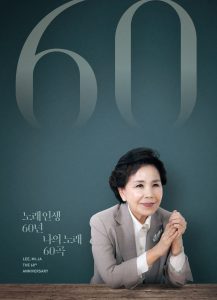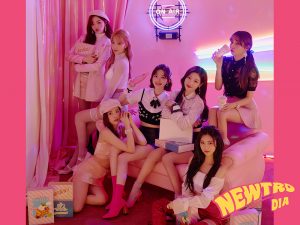
Though K-pop and K-pop artists are now a global force, another genre of music has also been enjoying widespread popularity in South Korea. Trot, a genre familiar to most Koreans, can be traced back to the Japanese colonization of Korea in the early to mid 20th century. Reality shows, such as Miss Trot and Mr. Trot, have helped boost and spread trot to the younger demographic. The recent admiration for trot music and Trot artists also fits in nicely to the all-encompassing trend of Newtro. Trot’s current mainstream popularity can largely be attributed to the genre gaining prevalence among a younger demographic.
The name of Trot comes from “foxtrot”, although musically the two genres share very little similarities. In fact, Trot is often understood to have been influenced by Japanese Enka, which was a popular Japanese genre of music during the period of its emergence. Trot is often identifiable through its duple meter rhythm, which means that it is a two-beat rhythm; the genre was also called ppongtchak, which was an onomatopoeic reflection of the distinct rhythm. After the Korean War in the mid 20th Century, American influence on South Korean music grew, but Trot continued to survive. In the 1960s and 70s, now iconic Trot singers such as Lee Mi-ja and her song “Camellia Lady”, and Na Hoon-ah and Nam Jin emerged.
As other music genres influenced by American music started to gain popularity in Korea, Trot started to lose its hold on mainstream popularity. In the 80s, the change from the slower, sadder, sound of older trot to a much more upbeat and happy sound helped Trot gain new popularity. However, the rise of first-generation idol groups in the 90s, such as Seo Taiji and Boys, contributed to the further push of Trot away from the mainstream.
Since last year, Trot and Trot singers have increased their popularity among younger audiences through shows such as Miss Trot and Mr. Trot. The two shows follow a similar format, where 100 contestants are slowly eliminated in the quest to find the new Miss or Mr. Trot. Miss Trot, which aired in 2019, crowned Song Ga-in as the winner. Though she had made her debut before the show, it was through winning the competition that she was able to gain widespread recognition.

The follow-up show to Miss Trot, Mr. Trot, was broadcast earlier this year and surpassed 30% viewership to become the highest rating cable reality show. The popularity of the show was so much that the winner was unable to be announced during the last episode because the live voting system had been overwhelmed by the number of votes sent in. Instead, there had to be a special live broadcast several days later for the announcement of the winner: Im Young-woong.
Currently, the top seven contestants from Mr. Trot are enjoying immense popularity. Indeed, they were guests on variety show Knowing Bros for three weeks in a row; the first episode they were featured in had viewership over 15%. It is currently the episode with the highest viewership for the show this year.
The popularity of the contestants from both Miss Trot and Mr. Trot can be attributed to how it featured a competition format familiar to younger viewers. Both shows started with 100 contestants, slowly eliminating them and even incorporating live audience votes for Miss Trot and live text-in votes for Mr. Trot. The format may be a familiar one for viewers of shows like Produce 101 or even Show Me the Money. Although these two music survival shows were targeted towards a younger demographic, by using K-pop and K-hip hop which are newer genres of music in Korea in comparison to Trot. The application of a music survival show format to an older genre of music like Trot, which is not typically associated with youth, was successful in targeting both younger and older audiences.
The current popularity of Trot and Trot singers also ties in well to another trend, Newtro. The name itself, Newtro, is a combination of the words “new” and retro”. As the name suggests, it is about applying a contemporary twist to former fashion, music, and beauty trends, amongst others. Newtro allows a younger demographic to experience retro trends and culture that existed before they were born or were too young for. In the K-pop world, DIA even released an album, Newtro, last year with title song “Woowa“.

Riding on the concept of Newtro, Trot has also been both discovered and rediscovered. Much like the restyling of other older trends, much of Trot music today can be classified as semi-trot, because of the differences from the earlier version of the genre. The youth of today, much more accustomed to K-pop, are discovering both older and newer styles of trot through shows such as Miss Trot and Mr. Trot.
In contrast, their older family members who may remember Trot’s golden era are now again seeing Trot and new Trot singers riding a wave of new popularity. The power of nostalgia should not be ignored; first-generation idol groups such as g.o.d. and Sechkies from the late 90s and early 2000s have successfully reunited and performed concerts and even released albums together, combining the power of their previous and new fans. The popularity of Trot among youth, who are the biggest music consumers in Korea, could be a huge boost to the Trot industry.
Trot’s mainstream significance can be correlated to the genre gaining recognition among the younger demographic. Trot’s unique history, and its revival in popularity through shows such as Miss Trot and Mr. Trot, as well as the general trend of Newtro, may be indicative of a new potential heyday for the genre in Korea.
(Oxford Music Online, Encyclopedia of Korean Culture, The Korea Herald, Clozette, The Korea Times, The World, Naver [1][2] , YouTube. Images via MBK Entertainment, Joongang, TV Chosun, JTBC)


